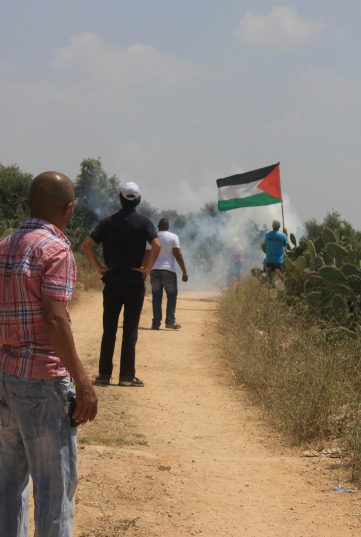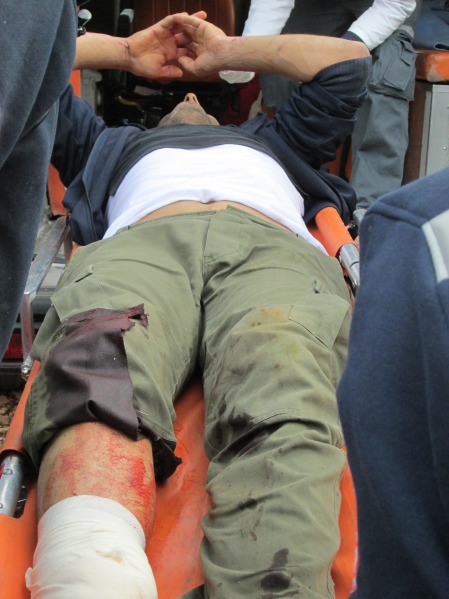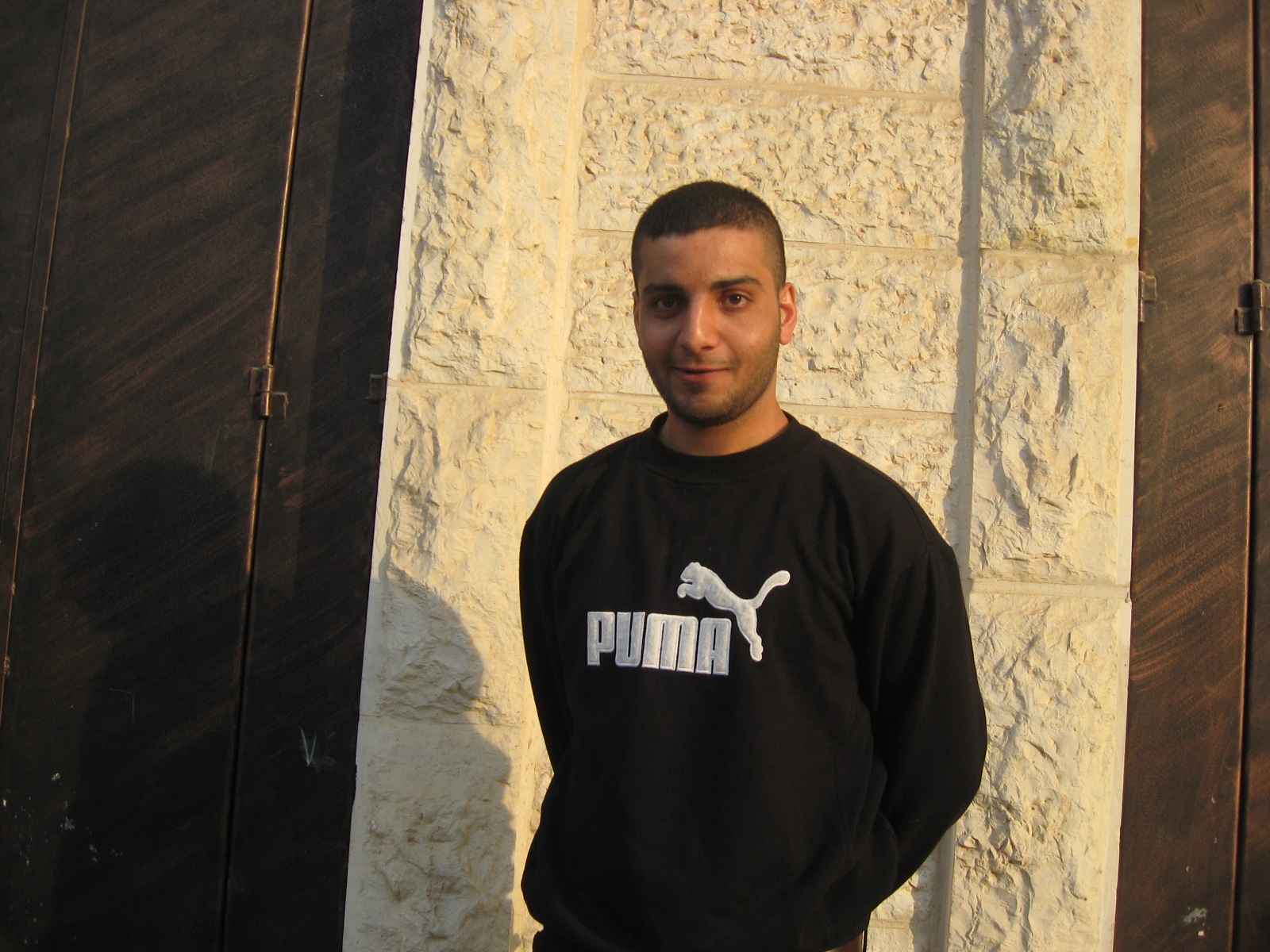Tag: Ni’lin
-
Violence in Ni’lin
14th June 2014 | International Solidarity Movement, Ramallah team | Ni’lin, Occupied Palestine A Red Crescent paramedic, present at the Ni’lin demonstration last week, spoke to ISM about the protest last Friday, 6th June. He explained that the demonstration began as the protesters marched towards the apartheid wall, with Israeli soldiers firing tear gas canisters and rubber-coated steel bullets. After just 15…
-
Palestinian shot with live ammunition during weekly Ni’lin demonstration
12th January 2014 | International Solidarity Movement, Ramallah Team | Ni’lin, Occupied Palestine On Friday 10th January, a Palestinian demonstrator was injured after being shot in his leg with live ammunition by Israeli forces while attending the weekly Friday demonstration. The incident happened in Ni’lin where Israeli military shot live ammunition against approximately thirty demonstrators who…
-
Interview with Saeed Amireh: “The occupation affects our life in so many ways, economically and socially.”
28th November 2013 | International Solidarity Movement | Ni’lin Can you tell us a bit of the history of Ni’lin? In the past, Ni’lin used to be part of the area which is within the ‘48 borders now. In 1994, when the Palestinian Authority came, Ni’lin became part of Ramallah city. So now Ni’lin is…



